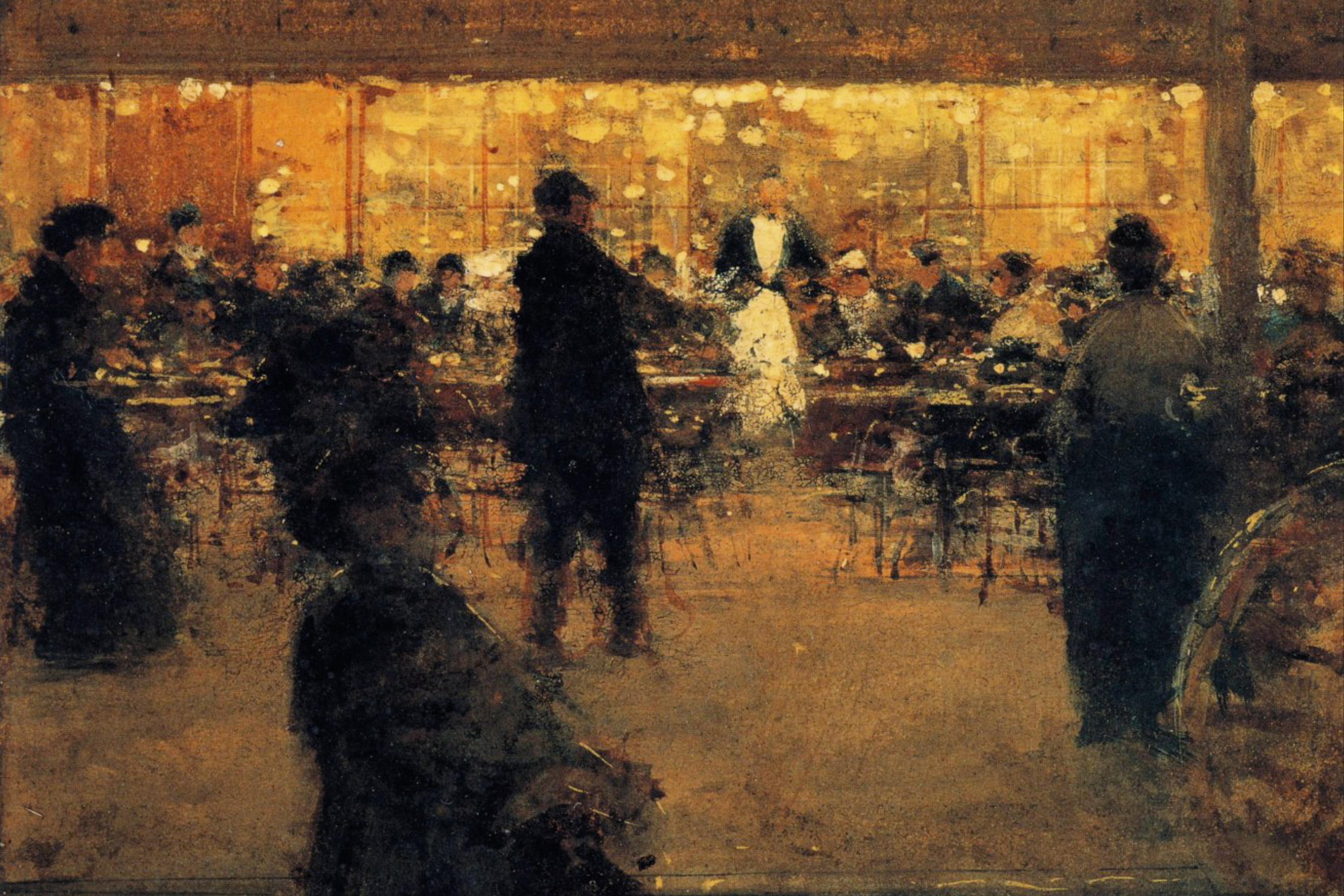Imagine you’re sitting in a bus, waiting in line or simply sitting on your sofa at home, and you find yourself with a few minutes of idle time on your hands – how might you occupy yourself? As most do nowadays, you’re likely to start scrolling through your phone; but what if, instead, you chose to retreat into your own mind and entertain yourself with pleasurable thoughts? How hard could it be?
At first glance, it sounds eminently doable. After all, as humans, we possess remarkable minds that can reflect on the past, process the present, and even make forecasts about the future. We can direct our thoughts on real or imagined, as well as pleasant or unpleasant, scenarios and events. Given the endless forms our thoughts can take, why wouldn’t we – when given the opportunity to withdraw from the external world – dive into our own minds and entertain ourselves with our thoughts?
About 10 years ago, psychologists at the University of Virginia and Harvard University began exploring this question by inviting volunteers to spend time in a room void of all distractions (except for an electric shock device) and to occupy themselves with their thoughts. Their findings, published as a series of studies in 2014, were striking: 67 per cent of the men and 25 per cent of the women opted to intentionally shock themselves, rather than spend a short period of time alone with their thoughts. Subsequent work has confirmed that people generally report low-to-moderate enjoyment following an experience in which they are given full freedom to sit and think.
These findings seem surprising for a species that’s defined by its unique thinking abilities (surely raising doubts about our species name, Homo sapiens, which translates from Latin as ‘wise human’). But it is important to note that our brains have primarily evolved to regulate our body’s metabolic needs through action and, while we do possess remarkable capacity to simulate other worlds within our own minds, to do so is a cognitively demanding task and one for which we’re not necessarily well practised. Perhaps another factor at play, beyond the aversiveness of the effort involved, is that the benefit of thinking pleasurable thoughts is not intuitive, especially considered against the many competing things to think about – planning, problem-solving or even ruminating over events. While attending to negative issues within our lives has its uses, it certainly isn’t enjoyable. Thinking for the purpose of enjoyment might therefore require practice and sufficient motivation – people might need a little nudge.
A team of international social psychologists led by Nicholas Buttrick and Timothy Wilson at the University of Virginia did just that recently, by asking their volunteers to set aside a ‘thinking break’ to focus specifically on pleasurable thoughts with the sole purpose of enjoying the experience. However, they found that, even when instructed to think specifically pleasurable thoughts, people still did not particularly enjoy the experience relative to other activities. Across a series of studies involving participants from 11 different countries, those assigned to thinking for pleasure rated the experience as significantly less enjoyable than others assigned to various other solitary activities, including reading or watching a video. The findings were consistent across cultures, which demonstrates the universality of people’s preference for activities that provide an external source of entertainment, rather than spending time thinking about pleasurable topics of their own making.
To better understand why thinking for pleasure is so challenging, it is helpful to break the activity into two basic parts: the thought processes and the thought contents. The thought processes refers to the intention (ie, having sufficient motivation) and ability (ie, having sufficient concentration) to think for pleasure, while the thought contents refers to the subject matter of one’s thoughts, and whether they are sufficiently meaningful and/or pleasurable.
Although people might generally prefer external stimulation compared with thinking for pleasure, another recent series of studies showed that thinking can be rendered more enjoyable simply by boosting people’s intentions to use their thoughts in that way – when researchers instructed participants to specifically think for pleasure, rather than giving them the freedom to think about whatever they wanted, the participants found the experience to be significantly more enjoyable. This suggests that being motivated to think for pleasure, and intentionally doing so, increases the enjoyment and does not merely occur to people as a natural insight.
Turning to the second component of the process side of thinking for pleasure – ie, having the ability and concentration to generate the thoughts and to sustain one’s attention on such thoughts for a prolonged period of time – another series of studies confirmed the relevance of these factors. Following a period of trying to think for pleasure, participants reported finding it particularly hard to concentrate and, to the extent that they found it challenging, it significantly decreased their reported enjoyment. Fortunately, the same research found an easy fix for this aspect of the thinking process – when the researchers asked the participants to first write down a list of enjoyable topics, and when they could look at their list during the thinking break compared with not having their list with them, the participants reported less difficulty in concentrating, which led to greater overall enjoyment of the thinking time.
This brings us to the other key part of thinking for pleasure – the content of one’s thoughts. What type of thoughts garner the greatest enjoyment? And do we know intuitively what those are? Our recent research, led by Erin Westgate, suggests that most of us don’t know what to focus on to generate the most enjoyment out of intentionally thinking for pleasure. My colleagues and I found that providing participants with examples of enjoyable thinking topics (ie, accomplishments, social occasions, vacations) increased their enjoyment, compared with having participants generate their own topics, suggesting that they’d struggled to come up with these topics for themselves.
My collaborators and I also found an intriguing pattern – the strongest predictor of enjoyment in a thinking period came from the extent to which participants said they found it meaningful. This led us to wonder whether directing people to focus on meaningful thoughts would provide them with greater enjoyment, rather than focusing on simply pleasurable ones. We tested this in a second study, by providing the same example topics (as above) to two group of participants, but we asked one to specifically think for meaning, while another to think for pleasure. To our surprise, we found that those people instructed to think meaningful thoughts reported finding the experience less enjoyable and no more meaningful than those instructed to think for pleasure. To explore this further, we asked these participants to write down the topics they’d thought about. Using linguistic text analysis, we found that the participants we’d asked to think meaningful thoughts used significantly fewer emotional as well as fewer positive words than those asked to think for enjoyment. This suggests that people do not spontaneously choose meaningful topics that are also enjoyable.
Overall, our findings demonstrate that, when people are asked to think enjoyable thoughts, they don’t necessarily think of meaningful ones, thus detracting from their pleasure, and when they are asked to think about meaningful thoughts, they don’t necessarily think of enjoyable ones, again undermining their pleasure. All of this suggests that most of us do not have an intuitive sense of how and what to focus on in order to derive the most pleasure from our thinking experience.
Fortunately, these results point to a couple of scientifically backed ways for us to make thinking for pleasure actually enjoyable. So, now that you are coming to the end of this article and you have a few minutes to spare, why not spend some time with your own thoughts? Here’s what I can recommend for optimising your enjoyment:
- Your goal should be to have a good time; that is, make it your intent to focus on events and aspects of those events that bring you enjoyment.
- When conjuring topics, choose ones that are both meaningful and pleasurable (eg, social events and accomplishments).
- Prior to the thinking period, write down these topics, so that you can glance at them if you feel like you’re having a hard time staying focused.
- Set out a specific time for your thinking breaks; that is, choose to engage in the activity when you feel motivated to think for pleasure, but stop if and when you feel like it’s becoming too cognitively demanding.
- As with all things, practise – you will get better over time and, the more you do it, the more you will anticipate thinking for pleasure to be enjoyable.
The thoughts we create shape the lives we live, hence it is to our benefit to occasionally spend some time thinking for pleasure. While initially challenging, with a little practice, we have at our disposal the cognitive abilities to derive pleasure from simply entertaining our own thoughts. In a world in which the external environment demands so much of our attention, I believe we could all benefit from occasionally retreating inwards to derive both meaning and pleasure from within.








